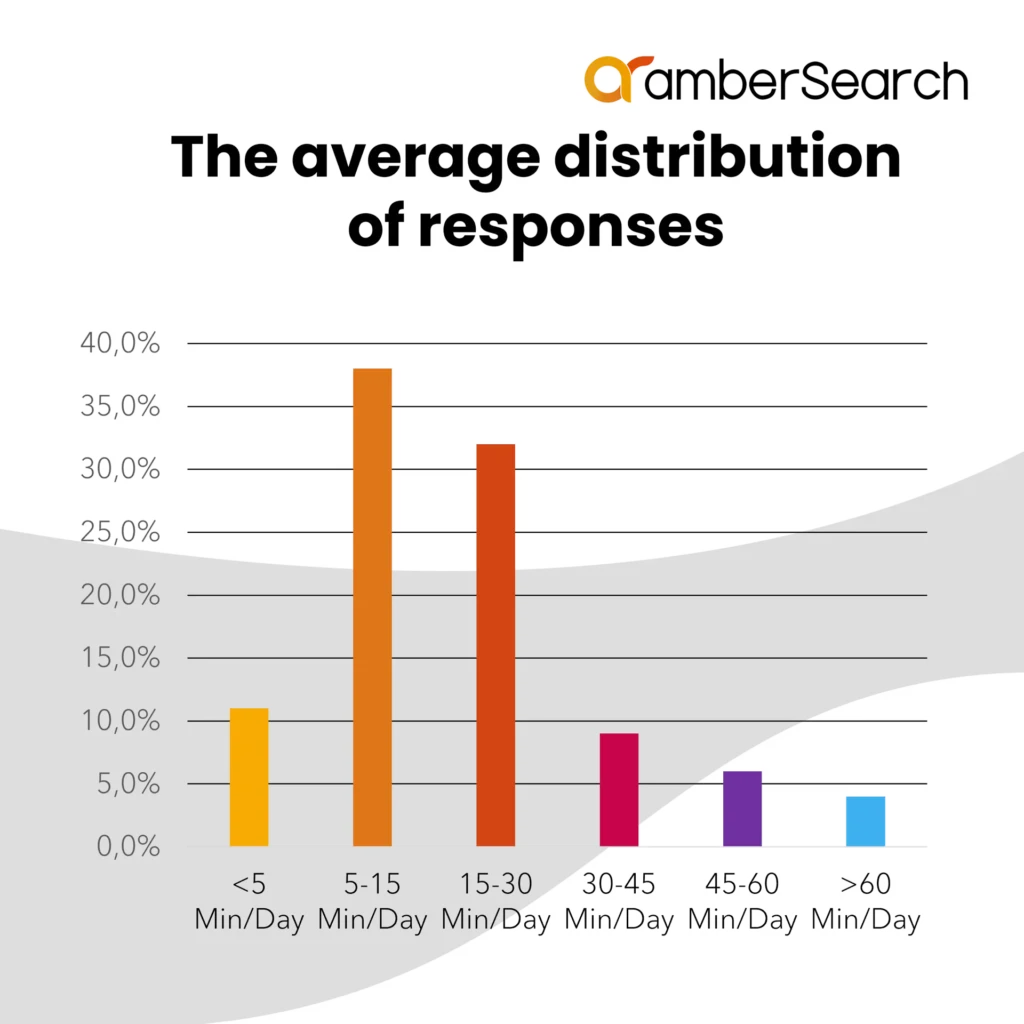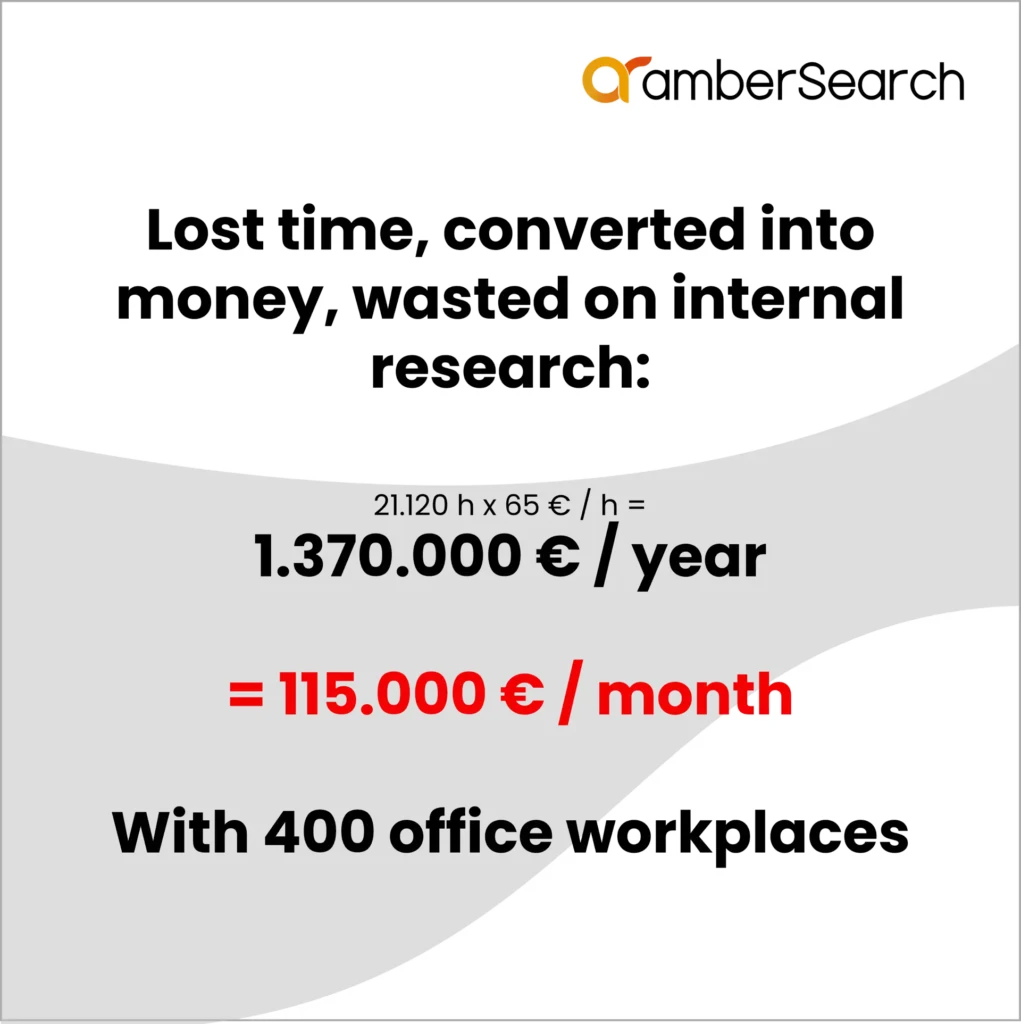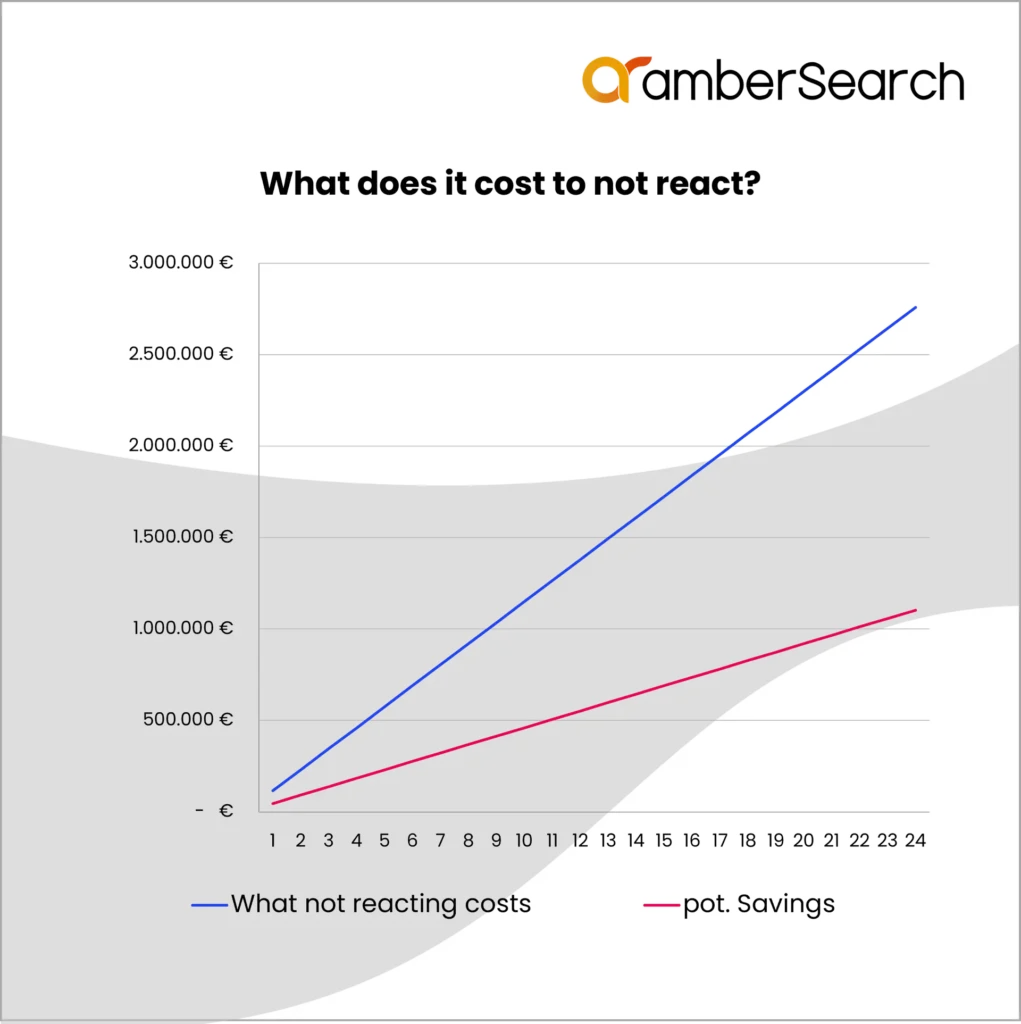Internal research for information draws more information than most people in a company realise. This blog article provides support to calculate the case for your own company.
Table of Contents
As a basis for the calculations, we recommend using the first method of one of our two frameworks. The results obtained here are used to calculate the figures for your own company. If you would like to calculate your case and have not yet done so, then first carry out the survey described. Alternatively, you can use our figures and extrapolate them for your company.
To calculate the business case, there are various hard and soft factors. This article focuses on the calculation of the hard factors. Nevertheless, the soft factors should also be taken into account:
The soft factors
Besides the classic time savings, there are other soft factors to consider when introducing an enterprise search engine. These include:
- Increased employee satisfaction – With an enterprise search, employees feel less frustration when searching for information at work, which increases satisfaction.
- Reduce turnover – Higher employee satisfaction leads to less turnover and therefore significantly lower recruitment costs.
- Attract talent – A modern IT landscape and a modern digital workplace are part of a modern IT landscape. Talents expect a modern digital workplace
- Faster onboarding – Instead of spending ages shadowing colleagues or asking for help, an enterprise search enables new employees to access internal information quickly and, above all, independently.
- New & Remote Work – An enterprise search makes it easier to work with a new work approach. Instead of having to ask colleagues for help for every little thing, colleagues can find the information themselves with an enterprise search.
- This list can be extended, but it is intended as a thought-provoking impulse for further added value on a cultural level in addition to pure time savings.
The hard factors
The survey
In the survey already mentioned, we ask a question that serves as the basis for our calculations:
On average, how much time do you spend each day looking for internal information needed for work?
The possible answers are as follows:
- Less than 5 minutes
- 5-15 minutes
- 15-30 minutes
- 30-45 minutes
- 45-60 minutes
- More than 60 minutes
We have conducted the survey several times and the nice thing is that – as is so often the case – we have a Gaussian or normal distribution:

Distribution of responses to the question: “On average, how much time do you spend each day looking for internal information needed for work?”
This distribution has been confirmed over several surveys and will probably also settle roughly in this range in your company.
Get the results of the whole study
We have summarised the results of the study in a white paper. Download it here (German only):
Our example case
Let’s now take an example company with 400 employees in the office. Depending on the number of employees in your company, you can calculate the following steps accordingly with your numbers.
If we take the distribution presented and convert it to an absolute number of employees per category, we get the following absolute numbers:
| Daily search effort | Distribution | Absolute distribution [400 EMP] |
| less than 5 minutes | 11% | 44 |
| 5-15 minutes | 38% | 152 |
| 15-30 minutes | 32% | 128 |
| 30-45 minutes | 9% | 36 |
| 45-60 minutes | 6% | 24 |
| More than 60 minutes | 4% | 16 |
If we convert the absolute distribution together with the answers given into the daily time spent (per hour), then the employees of a company with 400 office staff invest an average of 136.5 hours per day in internal research.
For comparison: In an 8-hour working day, that is 17 people searching full-time for internal information only.
| Answer options | Absolute distribution | Time waste [h/day] |
| Less than 5 minutes [5 min] | 44 | 3,7 |
| 5-15 minutes [10 min] | 152 | 25,3 |
| 15-30 minutes [22,5 min] | 128 | 48 |
| 30-45 minutes [37,5 min] | 36 | 22,5 |
| 45-60 minutes [52,5 min] | 24 | 21 |
| More than 60 minutes [60 min] | 16 | 16 |
| Sum [h/day]: | 136,5 |
The next step is to determine a value for the whole year. We have done this in the following table:
| Projection | Time waste |
| Sum [in h/day] | 136,5 |
| Sum [in h/week] | 682,5 |
| Sum [in h/month] | 2.934,8 |
| Sum [in h/year] | 35.217,0 |
Justifiably, some people will now say that the values are too high, since no person actually sits at a PC 100% of the possible working days. We agree with this. To simplify the calculation a bit, we assume that employees spend about 40% of the time in training courses, at trade fairs, on holiday, sick, etc. This makes 21,200 hours out of the calculated 35,200.
This makes 21,120 hours/year out of the calculated approx. 35,200 hours that are needed each year for internal research for information.
We can now multiply this value by an average, imputed hourly rate of 65€. The result is that companies lose 1,370,000 €/year because their employees (should) rather spend their time researching internal information – they are there anyway. At least that is the argumentation and mindset of some…

It is a pity that this is wasted capital, with which neither new, value-added projects can be implemented, nor can this money be invested in staff training. Much more could be done with this capital and especially with the time freed up for staff – reduction of stress for staff, new investments & Co….
What does this mean for you?
Probably your company does not have exactly 400 employees. Therefore, we have made a small 3-set calculation to give you a feeling for the values of your company size:
| Office workers [EMP] | Monthly lost cost |
| 50 | 14.375 € / month |
| 100 | 28.750 € / month |
| 200 | 57.500 € / month |
| 300 | 86.250 € / month |
| 500 | 143.750 € / month |
| 750 | 215.625 € / month |
If you want to calculate this for your company, then feel free to change the values accordingly and use the frameworks already presented to get further insights for your company.
How can we help with amberSearch?
We are aware that we at amberSearch will not be able to reduce this time to zero – no one can. Why? There will be one or two smaller data pots that cannot be connected for whatever reason or the employee simply does not have the access rights to access the desired information.
Nevertheless, with amberSearch we offer an AI-based solution that can reduce this by up to 40% (according to some customers).
How would you invest one million saved for your company?

We have shown how a possible cost/benefit diagram could look in the diagram. The tool to generate this automatically is available here:
When you enter your contact details, we will send you our Excel tool so that you can calculate your cost-benefit diagram.
